- Highlights of the Month
- Restaurants
- Hamburg DOM
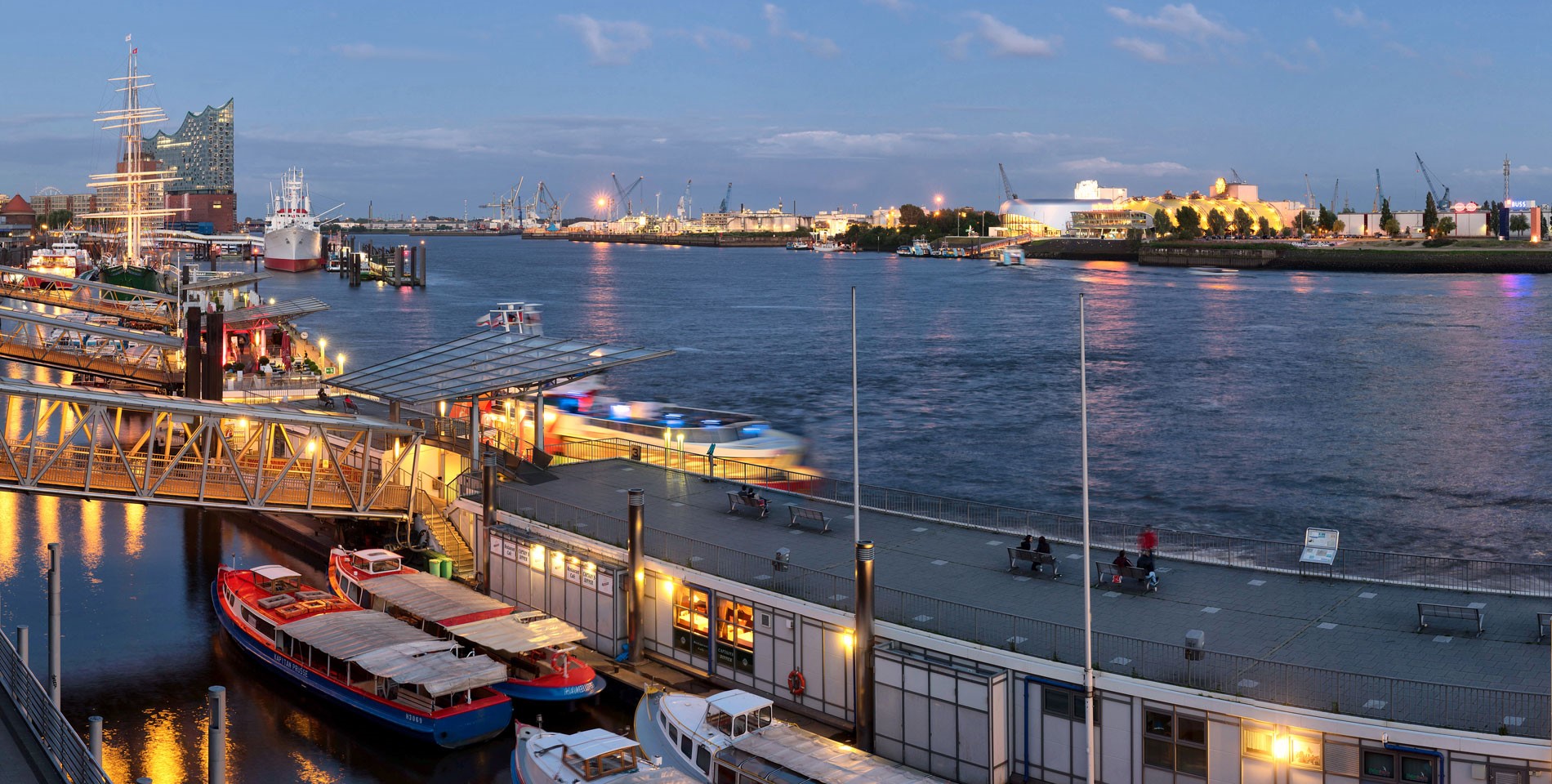

Museums U-434 Submarine Museum
Visit a fully operational U-434 submarine in Hamburg’s harbour to experience a trip below sea level in a Soviet warship!
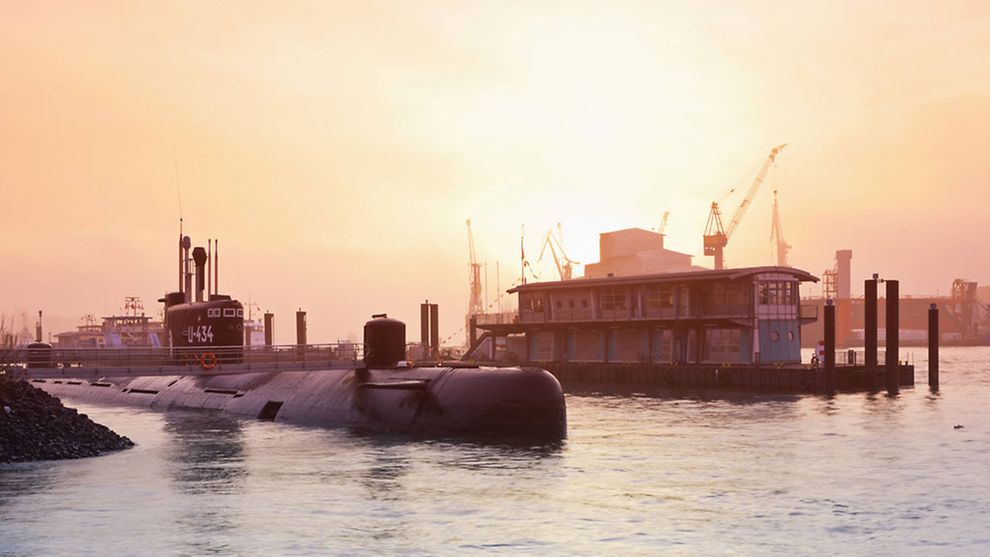
U-434 Submarine Museum
When people think of German films, Wolfgang Petersen’s 1981 war film Das Boot is sure to be one of the first that comes to mind. Those who have seen it won't soon forget the claustrophobia of the titular submarine. If you're eager to experience that sense of claustrophobia first-hand, then a visit to U-434 in Hamburg's harbour is a must.
Docked in front of the Fischmarkt market hall, the Soviet-built submarine from the mid-1970s is still fully operational. But its days of stealthy underwater missions are behind it, having remained in Hamburg since 2002 serving as a museum dedicated to the horrors of war.
This Tango-class sub is a lot bigger than the U-91 from Petersen's film. In fact, at 90.16 metres in length, it is among the longest non-atomic submarines in the world. However, considering that it was built to accommodate up to 78 men, those 90.16 metres don't seem so roomy, and on your tour you can witness the crew's cramped quarters for yourself, along with the officers' mess and the engine and torpedo rooms. If you want to see the ship's bridge, then a guided tour is a must. Your tour guide will also ensure you get all the background information necessary to get as much out of your visit as possible.
U-Bootmuseum Hamburg GmbH St. Pauli Fischmarkt 10, 20359 Hamburg 0049 +40 3200 4934 [email protected]
Opening Hours:
Mon ─ Sat 9 a.m. ─ 8 p.m. Sun 11 a.m. ─ 8 p.m.
Individuals with claustrophobic conditions may do well to skip this attraction, and those with physical disabilities should be aware that wheelchairs cannot be used due to a lack of space.
For more information please see the website of Hamburg Travel .
KM1 Con Prinz U-434
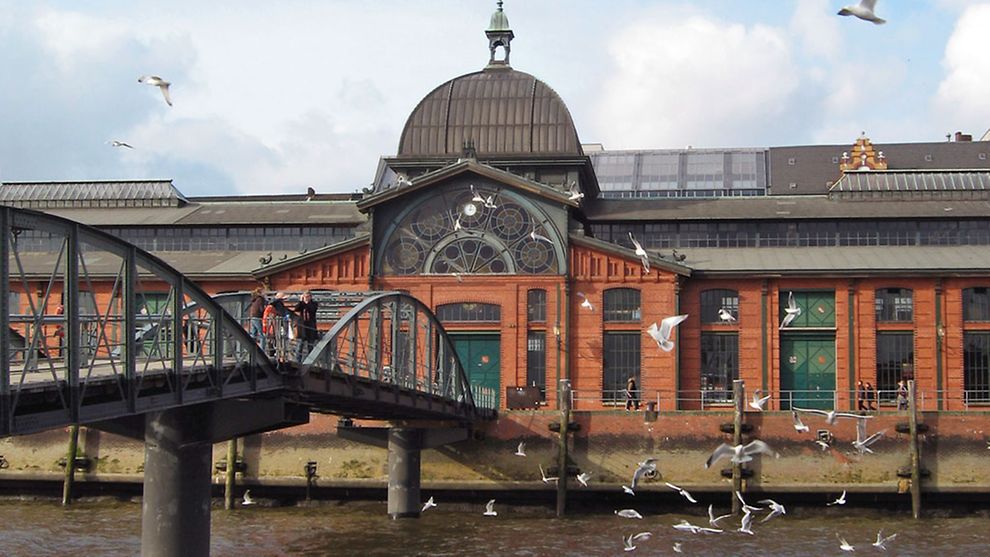
Sights Fish Market
Every Sunday morning, the Hamburg Fish Market by the Elbe attracts thousands of visitors, night owls and early birds alike!
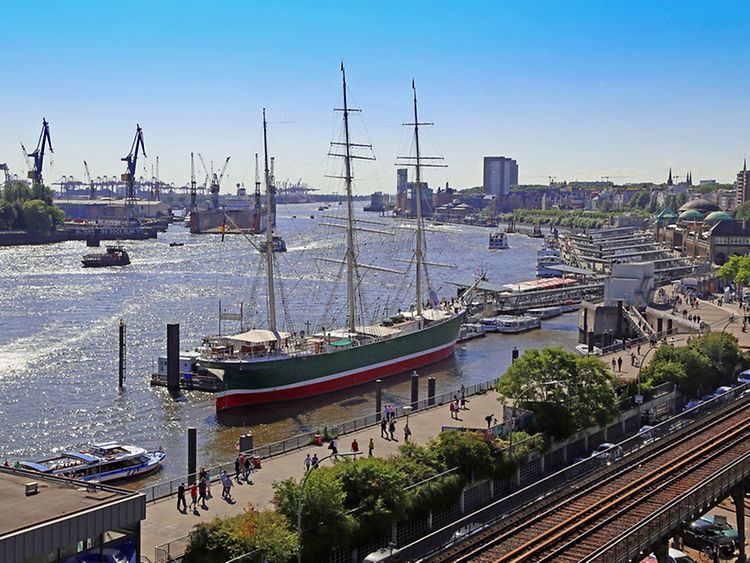
Museums Rickmer Rickmers
A museum ship since 1983, the three-masted Rickmer Rickmers is one of Hamburg harbour’s most popular attractions.
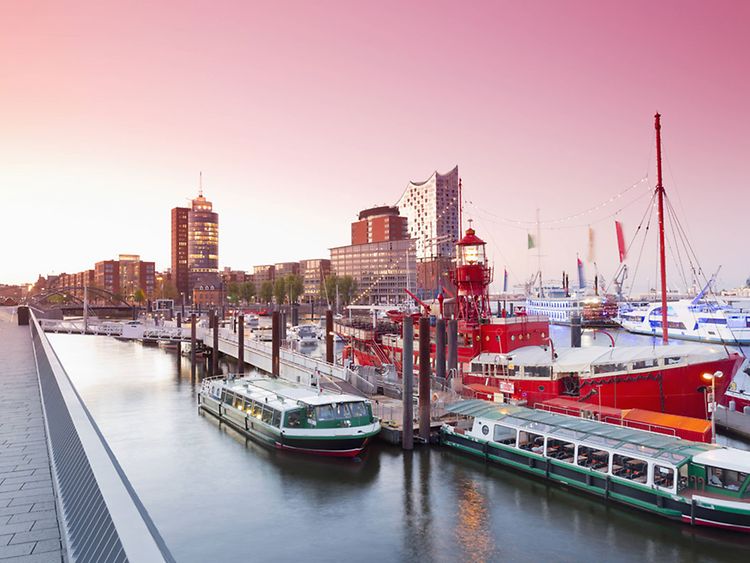
Sights Feuerschiff LV13
This former firefighter ship turned event location and hotel is anchored in the harbour next door to the spectacular Elbphilharmonie Hamburg.
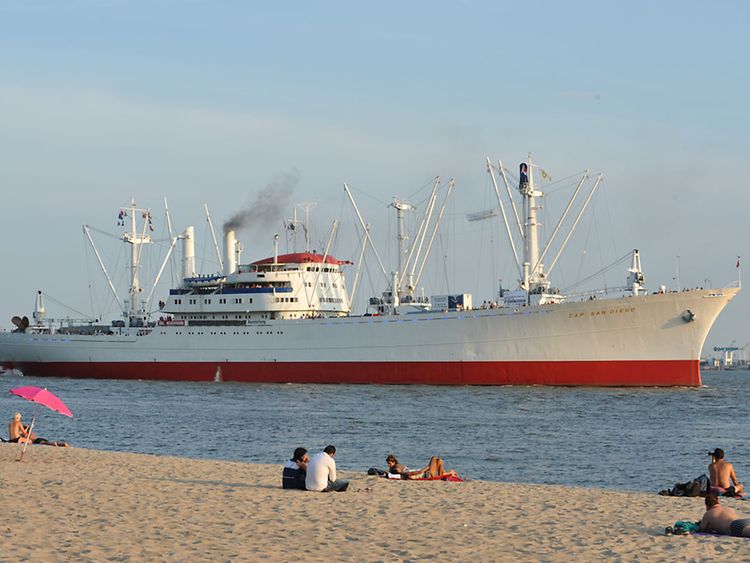
Museums Cap San Diego
Former cargo ship MS Cap San Diego is a floating museum and more. Visit the exhibits and then book a night aboard the ship!
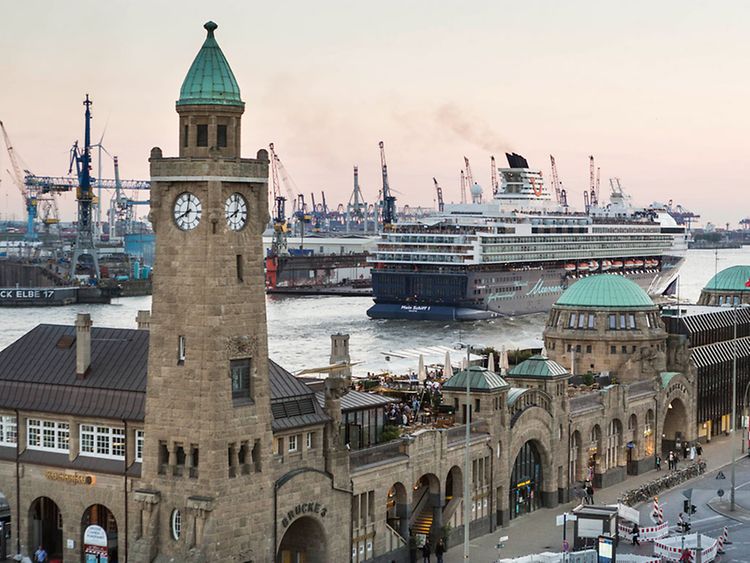
Sights Landungsbrücken Piers
Spectacular views, historic waterfront buildings and a public transport hub? Look no further than St. Pauli's Landungsbrücken.
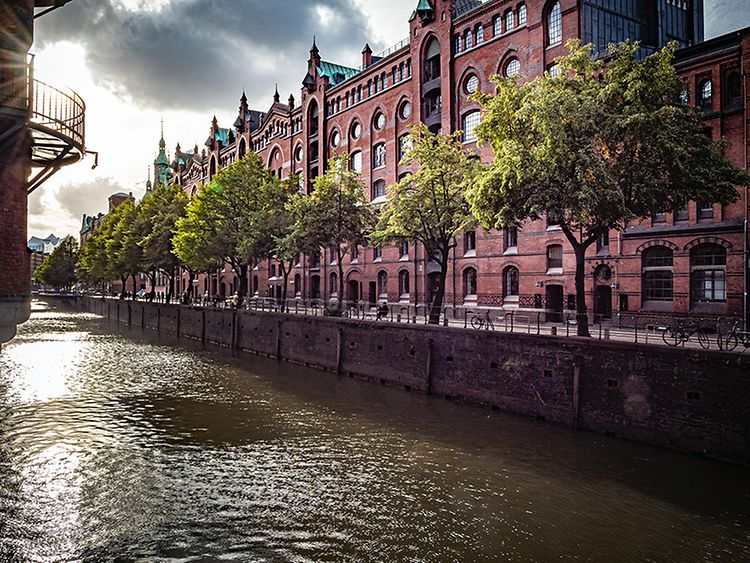
About Hamburg History
The city of Hamburg has a hanseatic history of trade, autonomy and economic power, but also of hardship and war.
Copyright owners of the images
- Visitors : © www.mediaserver.hamburg.de / Andreas Vallbracht
- U-434 Submarine: © imago stock&people / Westend61
- Fishmarket Markets: © www.mediaserver.hamburg.de / Christian Spahrbier
- Rickmer Rickmers: © Sarah-Isabel Conrad / Rickmer Rickmers
- Lightship LV13: © imago stock&people / Westend61
- Cap San Diego: © Cap San Diego / C. Fredriksen
- Landungsbruecken: © www.mediaserver.hamburg.de / Jörg Modrow
- History of Hamburg: © Jürgen Ritter / imago images

MilitaryHistoryNow.com
The Premier Online Military History Magazine

Permission to Come Aboard — Four Surviving WW2 U-Boats You Can Actually Visit

“Today, only five U-boats remain and four of them are open to the public. So where can you visit these fascinating relics?”
GERMANY PUT NEARLY 1,250 U-boats to sea in World War Two. Of those, nearly 800 were destroyed by Allied ships and aircraft, 220 were intentionally scuttled by their crews at war’s end, 156 were handed over to the British and Americans on VE-Day (116 of those were later sent to the bottom), 50 were declared missing and six were captured in action. Today, only five U-boats remain and four of them are open to the public. So where can you visit these fascinating relics? Read on.

The Chicago Museum of Science and Industry has been home to the U-505, a Type IXC U-boat, since 1954. The vessel was seized by the USS Chatelain on June 4, 1944 off the coast of West Africa. After its capture, the 505 remained with the U.S. Navy until it was donated to the Chicago museum. It’s been on display there to this day. Visitors can peruse the larger U-boat exhibit as part of the museum’s general admission, but a 15-minute stem-to-stern tour of the interior of the 505 costs an additional $8. Special two-and-a half hour, in-depth tours are available on select weekends throughout the year. Still a very popular attraction, the museum recommends visitors buy passes to the on-board tour online in advance and to try to visit early in the day or on Mondays and Tuesdays to avoid the crowds. http://www.msichicago.org/whats-here/exhibits/u-505/

Those visiting Kiel, Germany can board and tour the U-995 , a completely intact Type VIIC/41 U-boat. From September of 1943 to the end of the war, the 220-foot vessel conducted several patrols, sinking a total of nine enemy ships, including two warships. After surrendering to the British in Norway at war’s end, the U-955 went on to serve in the Norwegian navy until 1971, when she was donated to Germany as a museum piece. Norway charged Germany a single Deutsche Mark for the 995. For the past 40 years, the U-boat has sat at the waters edge delighting visitors. http://www.deutscher-marinebund.de/u995_geschichte.htm
One of Germany’s last U-boats to be built, the U-2540 was scuttled before she could see action. A Type XXI , the 2540 was commissioned in late February, 1945. Fuel shortages prevented the 251-foot U-boat from sailing into battle – instead she was sent to the bottom of the Baltic on May, 4, 1945. Salvaged in 1957, she was restored and served as a research sub in the post-war German navy and finally decommissioned in 1982 after a collision with a destroyer. The new owners, the German Maritime Museum, converted the ship back to her wartime configuration and since 1984 have opened the 2540 to the public at Bremerhaven, Germany. www.dsm.museum

Visitors to Liverpool, England can get up close and personal with the remains of U-534 , a Type IXC/40 , which was sunk in the closing days of the war. Mystery surrounded the motives of the U-534 skipper who ignored orders from the Kreigsmarine to surrender his vessel to the Allies and instead steamed out to the open sea. That’s when she was spotted and attacked by a RAF B-24 bomber. The vessel sunk and remained undisturbed for 41 years until a Danish salvager discovered the wreckage. Many speculated that the boat might have been trying to escape with Nazi gold and that a fortune was waiting in her hull. Such rumours proved false when the 534 was raised in 1996. The U-boat first went on display in Birkenhead England as part of the Warship Preservation Trust. When the foundation went bust in 2006, she was transferred to the Liverpool ferry authority. The main hull of the boat was split into sections and is now displayed in separate segments in a large open air waterfront park on the Mersey River. A replica of conning tower and a U-boat museum complete the exhibit, which is open daily. Admission is £6 for adults and £3 for children. http://www.u-boatstory.co.uk/
(originally published May 16, 2012)
Help spread the word. Share this article with your friends.
- Click to email a link to a friend (Opens in new window)
- Click to print (Opens in new window)
- Click to share on Tumblr (Opens in new window)
- Click to share on Pinterest (Opens in new window)
- Click to share on Facebook (Opens in new window)
- Click to share on Reddit (Opens in new window)
- Click to share on Twitter (Opens in new window)
- Click to share on LinkedIn (Opens in new window)
14 thoughts on “ Permission to Come Aboard — Four Surviving WW2 U-Boats You Can Actually Visit ”
Hi, you mentioned there was a 5th submarine boat that is not open to the public, do you know where it is? Or, who owns it? I look forward to hearing your reply! Thanks
I tried to find my old notes for the article… it was published four years ago. Still looking. I *think* there is one in Germany that is sealed.
I believe it is a memorial for the u boat crews at Flensberg.
It is a shame that the US Navy thought it was better to junk sink the U-Boats, rather than keep them for historic value.
I think that, at the end of a terrible war such as WWII, no one was really thinking of “historic” value, they just wanted to put it all behind them. I must admit to not understanding why they weren’t used for the steel in them though. A lot of steel at the bottom of the Atlantic that could have been recycled. Of course, maybe the idea of recycling wasn’t on anyone’s minds at that time.
Maybe I’m wrong but wasn’t U-605 a Type VII C bpat?
You’re right. We checked. But U505 isn’t.
There is another U-Boat in South America held onshore by a German collector and three more in the damaged and sealed U boat pens in a German port city. Of course there are several more at the bottom of the ocean including off of the South Carolina coastline.
The Type 11’s were very sophisticated, they look like modern subs. I always thought it was a very good thing that the Germans never had the capability to mass produce like the USA did.
The Museum in Chicago is named the Museum of Science and Industry, not “Technology,” as your article says. You need to correct that.
I’ve heard about three scuttled type 2s somewhere off the Turkish coast, all used with some success by Germany against the Russians. Wonder if any might be salvageable?
- Pingback: login u-534 is displayed in four segments - cellhow
I’m not sure what is wrong, bt U2540/U2450 has both numbers in tyhe article.
Nice catch. Thanks.
Leave a Reply Cancel reply
This site uses Akismet to reduce spam. Learn how your comment data is processed .

From the MHN Archives
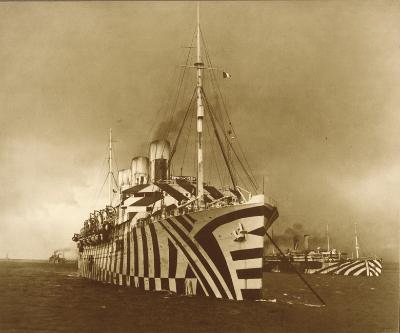
Top Posts & Pages
© COPYRIGHT MilitaryHistoryNow.com

Due to the Corona Pandemic, the German Submarine Museum will be closed to visitors until at least the end of April. Also the office is not occupied during this time, so that we cannot be reached by telephone and incoming mail cannot be processed for the time being.
For the same reason, this year’s ftu annual general meeting, which was planned for april 18, unfortunately has to be cancelled for the time being., the team of the german u-boar museum wishes all members and people that they may stay healthy and get through this crisis as well as possible..
Welcome to the German U-boat-Museum, an institution highly regarded by visitors and international experts. It is composed mainly of the U-boat-Archive and a collection of U-boat exhibits
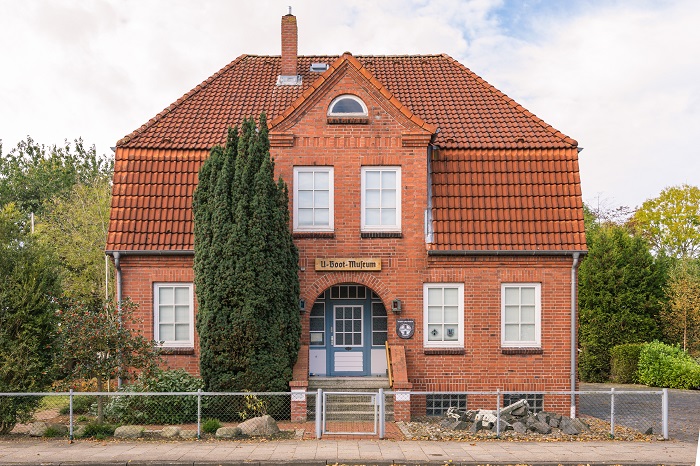
In order to maintain and further expand this facility the “Association of Friends of the U-boat Tradition Archive ( FTU )” was founded in 1992. Its members support the work and lasting existence of the U-boat-Archive through their personal hands-on co-operation, their donations or other contributions. If there is any interest on your side to become an active or supporting member of the association you can find more under Contact .
The file Flotsam is a compilation of contributions by volunteers of the archive of facts from the world of seafaring of general interest. Reports from the daily work at the archive and results of various projects are mentioned in file Reports & Figures . The file Series will present the information about visits to German U-boats by Head of States and Government published so far, as well as a new series about myths around operations of German U-boats, plus more series to come. Consequently, the current structure of the files has been amended.


Diashow Startseite 2
DSC00078.jpg
http://u-boot-wilhelm-bauer.de/images/startshow/DSC00078.jpg
_KMA1910b2-2.jpg
http://u-boot-wilhelm-bauer.de/images/startshow/_KMA1910b2-2.jpg
_KMA7273a.jpg
http://u-boot-wilhelm-bauer.de/images/startshow/_KMA7273a.jpg
KM000027.jpg
http://u-boot-wilhelm-bauer.de/images/startshow/KM000027.jpg
KM033284-1.jpg
http://u-boot-wilhelm-bauer.de/images/startshow/KM033284-1.jpg
KM033303-1.jpg
http://u-boot-wilhelm-bauer.de/images/startshow/KM033303-1.jpg
Opening/direction

Admission, aproaching, opening times...
Read more...
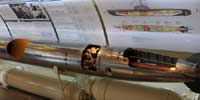
Exhibition in the U-Boot Wilhelm Bauer, entry hall
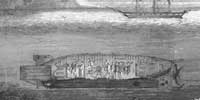
The history about Wilhelm Bauer and the U-Boot pioneers

Technical details of the U-Boot Wilhelm Bauer
Open from March 15th – November 10th daily, also on Sundays and public holidays!
Explore an original WW II submarine in the museum harbour of Bremerhaven.
This type of submarine was the first ever capable to complete a whole mission submerged, by maintaining a relatively high speed. It revolutionized the submarine design worldwide.
The submarine “Wilhelm Bauer” has never been in combat. It was scuttled by the own crew near the end of WW II.
1957 it was salvaged and after refit used as a training vessel in the Federal German Navy.
Be astonished about the technology and experience the narrowness 58 men had to stand, surrounded by the pressure of the water…
At the same time we want to remind of the horror of war and plead for a peaceful use of technology - for the maintenance of peace.
U-Boot Wilhelm-Bauer
in the museum harbour
of Bremerhaven
A story about on:

Opening times
March 15th - November 10th
Daily from 10:00 a.m. - 6:00 p.m.
Admission charge
Adults: € 4,-
Children (until the age of 5): free, accompanied by a paying adult.
Youth (6-17 years): € 3,-
Students: € 3,-
Groups from 15 participants: € 3,- per person
Guided tours: On request


This website and its offers are aimed exclusively at museum visitors in Germany, so that the texts, freely translated into English, serve as an aid.
The history of the submarines
The history of submarines is one of ingenuity, adventure and dramatic developments. It would be impossible to cover every single aspect in detail here. Instead, the following outlines the major historical events and developments relating to submarines that are commonly known.
The antique
Already in ancient times there were first attempts to realize the idea of bringing people under water using devices. Although no actual submarines existed at this time, the basic idea may have already been rooted in this period.
14th Century
In the 14th century, Italian inventor Guido da Vigevano made one of the earliest drawings of a submarine. Guido da Vigevano was not only an important doctor, but also a pioneer in the development of military equipment.
Over the course of this century, other inventors explored the idea of a submarine, although the shapes of these submarines varied greatly.
17th century
Cornelis Jacobszoon Drebbel of the Netherlands was the first inventor to move from idea to actual construction of a submarine. In the 17th century he built a submarine and reportedly even made a successful voyage on the Thames.
During this time, more and more progress was made in the development of submarines around the world, gradually bringing the functionality closer to today's submarines.
18th century
In 1772, the first submarine called “Steinhuder Hecht” was launched in Germany, more precisely in the Steinhuder Meer. This submersible was intended to be used for underwater operations in the event of a siege.
The American David Bushnell created a submarine called "Turtle" in 1776, which embodied the basic idea of a functional submarine.
19th century
Another American, Robert Fulton, built the "Nautilus" in 1800, a submarine that was relatively close in functionality to today's submarines. It had air supply from a compressed air system, windage and depth control and a hand-operated crank drive.
In the period that followed, various submarine models were developed around the world that attempted to overcome current challenges. The history of submarines is marked by ideas, adventures and tragic loss of life that occurred during the tests and initial operations of these submarines.
In Russia, Karl Andreevich Schilder built the first submarine made of all-metal construction, but further development was stopped after about ten years.
A few years later, in December 1850, the so-called "Brandtaucher" submarine, designed by artillery sergeant Wilhelm Bauer, was launched in Germany. However, due to financial constraints, essential components were neglected and the submarine sank on its first attempt at diving.
In 1863, the French Navy was able to commission the first submarine called the "Plongeur", which was powered by a piston engine and compressed air propulsion. It was the first submarine that no longer relied on muscle power. About a year later there was another mechanically powered submarine, the “Ictíneo II” in Spain.
During the American Civil War in 1864, the CSS H.L. Hunley became the first submarine to sink an enemy ship in combat.
In 1865, German-American engineer Julius Kröhl developed and built the world's first functional submarine, the "Sub Marine Explorer." This submarine was able to surface independently thanks to ballast tanks and its shape was reminiscent of modern submarines.
Towards the end of the 19th century, the military use of submarines came to the fore as technical advances made it possible to propel submarines mechanically. Various nations announced competitions and awarded contracts to develop promising submarine projects. This significantly accelerated the further development of submarines.
20.-21. century
During the First World War, military submarines were used on a larger scale. These submarines were powered by gasoline, Dieselengine , steam or petroleum engines for surface use and electric drive for underwater use. The submarine U 9 was one of the most successful military submarines of that time and sank the most enemy ships in the First World War. Because of these achievements, it was allowed to wear the Iron Cross on the tower.
It becomes clear at this point that the development of submarines was increasingly geared towards military purposes.
During the Second World War, German submarines were notorious, particularly for their so-called "pack tactics." This tactic was made possible by advances in radio technology. In 1942, after Germany declared war on the USA, German Type IX submarines were sent to America. Later even Type VII submarines followed, which had a shorter range. This was possible due to the secure supply of the submarines. Initially, the German submarine attacks were extremely successful and surprised the USA. However, the tide turned in 1943 when the Allies captured and successfully decrypted the German ENIGMA cipher machine. This led to a drastic reduction in the German submarines' chances of success.
Since the end of World War II, submarines have been continually developed for military purposes. Today they even serve as nuclear attack platforms that can attack almost undetected in the event of a nuclear conflict. This makes it difficult for adversaries to take appropriate countermeasures. At the same time, the development of scientific research submarines made significant progress after World War II. Today there are deep-sea submarines that conduct research in the depths of the sea and provide us with important knowledge about the ocean and its inhabitants, as well as about our history, for example sunken ships. In addition, the propulsion development of these submarines has made enormous progress in the last few decades. From nuclear propulsion to research into alternative forms of propulsion such as hydrogen propulsion, these developments have significantly expanded the capabilities and versatility of submarines.
On April 29, 1976, the submarine U-434 was launched and was one of the largest hunting and espionage submarines at the time. Further exciting information about U-434 can be found at the following link: U-Boat 434 .
© 2024 | U-Bootmuseum Hamburg | St. Pauli Fischmarkt 10 | 20359 Hamburg

The U-Boot Museum Hamburg: 7 Amazing Things to Do & See
How often do you get the chance to explore a fully operational Soviet submarine? The U-Boot Museum Hamburg (also known as the German Submarine Museum) is one of the best museums to visit in this vibrant, sprawling German harbour city.
Whether you lived through the Cold War, love military history, or simply want to explore something different, a guided tour of the U-Boot Museum in Hamburg is a fascinating 2-hour experience aboard a Soviet U-434 submarine!
My war history-obsessed son and I loved visiting this unique hidden gem that was on active service in the Russian Navy until April 2002.
It was quite a claustrophobic experience but also one of the most rewarding things to do in Hamburg .
In this post, you find out how to get to this submarine in Hamburg, what to see and do on your visit, and discover what life was like for the crew of the submarine in the Cold War era. You’ll also learn about the strange “creeping machine”.
Ready to take a look? Let’s get started!
Grey Globetrotters Travel Blog contains affiliate links. As an Amazon Associate, I earn from qualifying purchases. See my disclaimer for more information.
7 Things to See at the U-Boot Museum Hamburg
After crossing the bridge from the ticket office, we entered the submarine via a specially constructed entrance hatchway and steps at the boat’s bow (front end).
Fun Fact: A submarine is always known as a boat – never a ship!
1. Visit The Torpedo Rooms
The bow of the boat houses the imposing torpedo room, complete with six empty torpedo tubes that were looked after by ten submariners. Two torpedo tubes could be loaded at the same time, but it took three crewmen to do it!

2. Experience the Submarine Accommodation
After the torpedo room, the next area was the officers’ mess and accommodations where the five most senior officers (including two doctors) lived. This area also included (very sparse) medical facilities.
Every inch of space had a purpose, with some serving double duty – the officers’ mess was also the medical emergency operating room!
3. Check Out the U-434 Command Centre
Pro Tip: This area is only accessible on the German language guided tour.
When the submarine was operating, this cramped space housed 32 men. Even without understanding every word of German, it was easy for us to see the steering position and the commander’s seat in the front of the command centre.
We could also see the seat of the helmsman, who controlled the speed and depth of the submarine.
Then there was the central office with the telephone exchange connecting the bridge with the rest of the boat, and the engine telegraphs connected to the engine room.

4. Inspect the Crew Accommodation
Up to 84 men were squeezed on board this Russian submarine – 16 officers, 16 NCOs (non-commissioned officers) and 52 other sailors of varying ranks.
Depending on seniority, officers and NCOs had single or shared cabins with up to 4 bunks. The rest of the crew slept on camp beds on the lower deck – wherever space permitted.
The crew operated two watches or shifts, so every bunk or camp bed was used twice each 24-hour period – once by the first shift and then by the second.
We discovered that three chefs kept the crew well-fed, with a hot meal twice daily. Food storage, however, was a real challenge, with provisions stashed around the boat to ensure supplies did not run out!
5. Investigate the Diesel Engine Room
The chief engineer had a team of 11 engineers working to keep all three of the 6-cylinder turbo diesel direct injection engines in working order.
My budding engineer son loved all of the tech in this section.
6. Discover the Secrets of the E-Machine Room

Manned by eight engineers, this room held the submarine’s secret espionage weapon – the creeping machine!
In addition to the three electric motors, this submarine had a very quiet crawl speed motor, allowing the boat to run unnoticed in espionage areas!
7. Aft Section and Propellers
The final section of the U-434 submarine was where the hydraulic system for the rudder is installed. It’s also where you can learn about the 5-bladed propeller and how it works.
What to Know Before You Go to the Submarine Museum Hamburg
How to get to the submarine museum hamburg.
Address : U-Bootmuseum Hamburg | St Pauli Fischmarkt 10 | 20359 Hamburg
The U-boot museum is conveniently located for Hamburg’s public transport. It’s a short walk from the Landungsbrucke subway station and the buzzing St Pauli fish market.
Opening Hours
- Mondays to Saturdays: 9 am until 8 pm
- Sundays : 11 am until 8 pm

Accessibility at the German U Boat Museum
The inside of the submarine is much smaller than you might expect. It’s quite cramped and narrow, with vertical steps to climb and hatches to clamber through, so it’s unsuitable for people with physical limitations (or if you are claustrophobic).
You also have to watch out that you don’t bump your head as you climb through the hatches or up and down the numerous steps, as you don’t get a hard hat to wear!
Note: There is no access for wheelchair users at this museum.
Tickets for the U Boot Museum Hamburg
Admission : €9 for adults and €6 for children aged 6-12 (Children under 6 go free). A family ticket is €22. Check availability here .
Guided tours : €5 per person; however, these are only offered in German.
We joined the guided tour of this monumental Soviet-built warship, as it’s the only way to see inside the control room. With my schoolgirl German from many years ago and the teen boy’s GCSE German, we picked up most of what the tour guide talked about!
FAQs About The Submarine Museum in Hamburg
Why is there a russian submarine in hamburg harbour.
Soviet submarine B-515 was a Tango-class submarine built in 1976 and used for hunting, espionage, and patrol purposes. When it was decommissioned, a group of investors bought it for a million Euros and towed it to Hamburg.
Before transferring the submarine, the Russian Navy removed the weapon systems, control systems, and technical equipment subject to secrecy rules. The major systems, such as the engine and hydraulics, were also deactivated.
Then, when B-515 arrived in Hamburg, large holes were cut in the fuselage at the bow (front) and stern (rear) to provide visitor access. As a result, the submarine is no longer capable of diving or independent operation.
Where Can You Go Inside a Submarine?
If you enjoy visiting submarine museums and want to explore a British submarine -head to the Royal Navy historic dockyard in Portsmouth for a simply fabulous day out!
Alternatively, there are 25 submarine museums in the USA that you could visit!
Final Thoughts On Things to Do at the U-Boot Museum Hamburg
As you can see, the U-Boot Museum is the perfect quirky museum to add to your Hamburg itinerary – even if you’re only on a short break!
The U Boot Museum Hamburg is a must-visit destination for anyone interested in naval history and technology.
This unique museum has plenty of things to do, from exploring the inside of a real submarine to learning about Germany’s role in World War II. Visitors can also take part in interactive exhibits, watch historical films, and admire authentic artefacts from the era.
With its engaging displays and knowledgeable staff, the U-Boot Museum offers an unforgettable experience that will leave you with a deeper appreciation for the challenges faced by submariners during wartime.
Like It? Pin The U Boot Museum Hamburg For Later!

- How to Visit the Impressive German Tank Museum (Tank Museum Munster)
6 Best Tank Museums in the UK For Military History Fans
- Complete Guide to Visiting the Jersey War Tunnels
- How to Visit the Bovington Tank Museum (+TankFest)
Coralie Thornton, the owner and author of Grey Globetrotters, has been a traveller for more than four decades. Her passion for adventure has led her through over 40 countries, seeking cultural experiences, delicious foods, and hidden gems. Today, she helps others experience the UK, Europe, Egypt and China, with meticulously crafted travel itineraries and affordable luxury travel guides.
Similar Posts

Where To Stay in Durham: 10 Best Hotels In Durham, UK

Is the Jersey Heritage Pass Good Value?

The Ultimate 1 Day Li River Cruise Guide – What to Know Before You Go!

79 Incredible India Quotes To Spice Up Your Instagram Captures

Discover the 3 Best Jersey Beaches: A Complete Guide
- Skip to content
Laboe – Naval Memorial and U-boat U-995
Laboe with the Naval Memorial and the U-boat U-995 is located at the Firth of Kiel. I didn’t want to miss out on the opportunity to see the insides of a submarine, so we drove over.
It is a 20-minute drive to Laboe from Kiel, a bit longer or shorter depending on how heavy the traffic is. The car park for the Naval Memorial is very well signposted, the price for the car park is reasonable. It is just a short walk from the car park to the entrance of the Memorial. Tickets for the U-boat are available at the entrance.
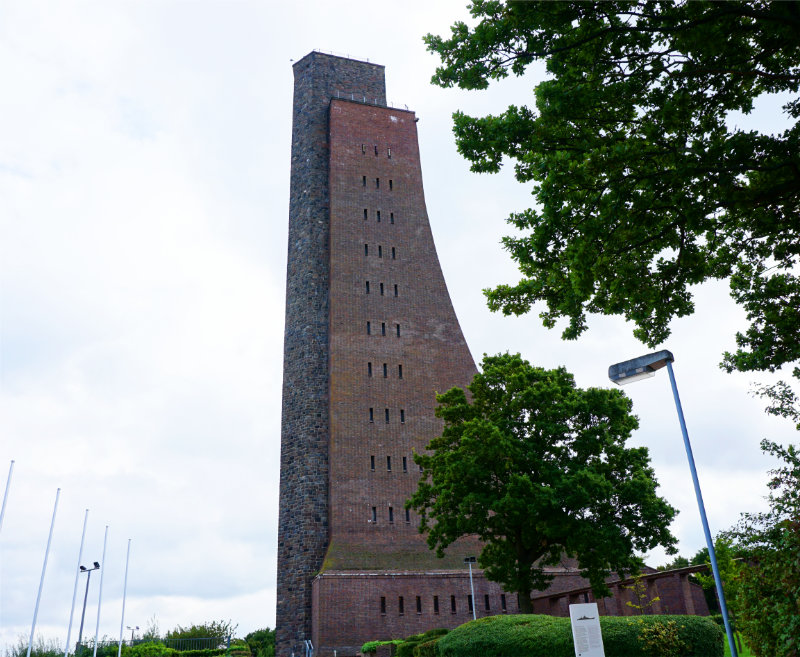
Laboe Naval Memorial
The Naval Memorial sits on a little hill. It is the first look one gets of the unusual building from the street that is interesting. The tower is 85 meters high and luckily I didn’t have to climb up the 341 stairs to the top with my fractured foot, there are 2 elevators that take guests to the viewing platform at the top.
The idea to erect a memorial in Laboe for the fallen imperial Marines of the First World War came up in 1925. The costs for construction were almost entirely covered by donations. The area was inaugurated in 1936. In 1954 the premises became property of the German Naval Alliance (Deutscher Marinebund) and the monument was extended by a memorial for those lost at sea and for peaceful seafaring.
The memorial area is really large. There is a big open area next to the tower as well as the Historic Hall where we marvelled at the miniature models of different ships. The available information is vast and it takes quite some time to read through it all but it is really worth it to invest that time!
A stairway leads down into the Memorial Hall from the Historic Hall. The circular room is quite dark and a dim light in the middle is the only light source. There are flowers and wreaths all over the room to honour the deceased. People only whisper down here out of respect for the dead.
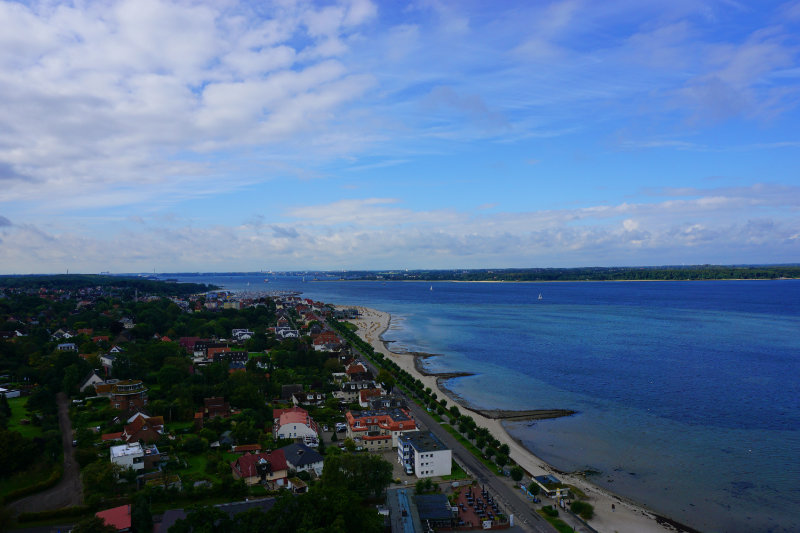
Next, we took the lift to the viewing platform on top of the Naval Memorial in Laboe (the second floor can be reached on foot). The wind was blowing through our hair and clothes, the sun was out and we couldn’t get enough of the fabulous view of the Firth of Kiel. Super, amazing, wonderful… what other adjectives are there? In the end, it was only due to the heavy wind that we made our way down from the platform.
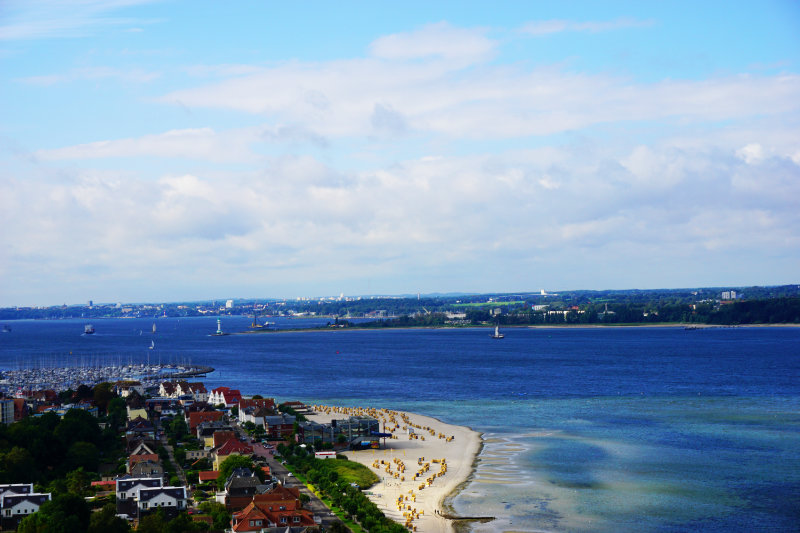

U-boat U-995
Across the street, on the banks of the firth, is the U-boat. The U-995 was used by Marines in the Second World War. It started operating in 1943 and was used in multiple battle actions and combat patrols. After the war, the Norwegian Navy used it as a training ship and for different tests. It was returned to Germany in 1965 and became a museum in 1972.
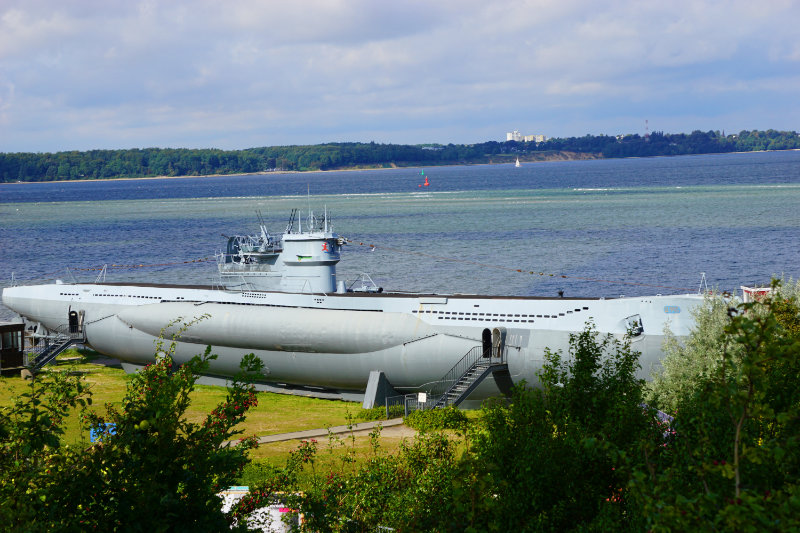
I left my crutches at the entrance of the U-boat. “Do you really want to go, it is very narrow in there” I was asked by the person at the entrance. It was indeed narrow and the thought that a 45 people crew was operating this boat was almost unimaginable. There were one toilet and another emergency toilet in the galley (that was also the pantry) and no washing facilities. The heat and smell that were trapped in there must have been incredible. There were only about ten other people with us in the U-boat when we visited and still I felt like I had not enough space. People were pushing from the back and it was impossible to take a minute to absorb all of the details. How hard must it have bee when submerged and under enormous stress…
For my part, I was glad that my stay in the submarine was only a brief visit. It was very interesting but a dive in a submarine is certainly not something I’d like to do!
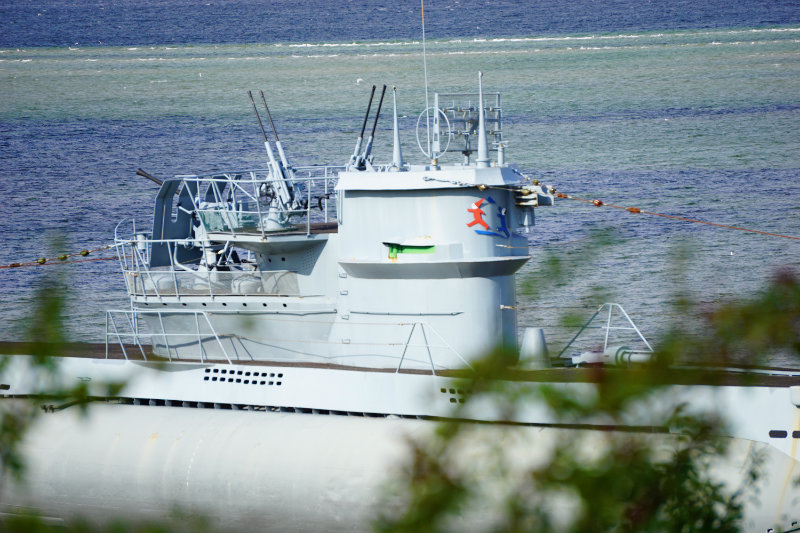
Strandstraße 92 24235 Laboe
Opening Hours:
1.November – 28.February: 10.00 – 16.00 1.March – 31.March: 09.30 – 17.00 1.April – 31.May: 09.00 – 18.00 1.June – 30.September: 09.00 – 19.00 1.October – 31.October: 09.30 – 17.00 24.December – 31.December: 10.00 – 14.00
Naval Memorial Adults: 6€ U-boat U-995 Adults: 4,50€ Combi Ticket Adults: 9,50€
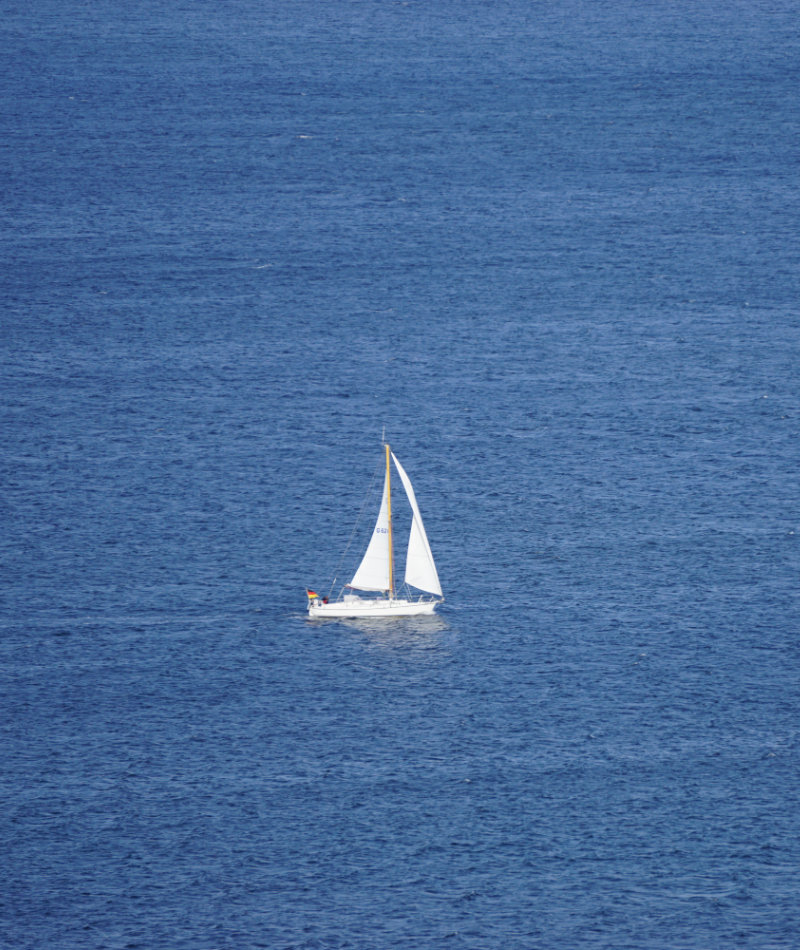
- share 6
- share
- save 2
Reader Interactions
Leave a reply.
Your email address will not be published. Required fields are marked *
Save my name, email, and website in this browser for the next time I comment.
- Search Search for:
- Architecture
- Military Tech
- DIY Projects

Take A Virtual Tour Of A German U-boat With These 42 Exclusive Pictures
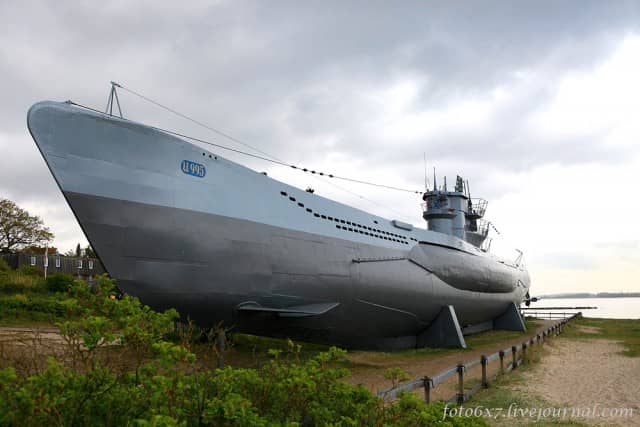
Ahh, the dreaded German submarine U-995. The boat that was the star of both of the World Wars, and was the factor is the making and breaking of so many battles. This particular U-boat was a German Type VIIC/41. It was manufactured on 25th of November 1942 and was commissioned on 16th of September 1943. Its first commanding officer was Oberleutnant Walter Köhntopp, with its service halting a t the end of the war on 8 May 1945 when it was finally brought down at Trondheim, Norway by the Royal Navy.
After being brought down, the boat was then transferred to Norwegian custody in October 1948. It was repaired, and in December 1952 the U995 was turned into the Norwegian submarine Kaura. The beauty remained active until 1965 when it was stricken by the Royal Norwegian Navy.
Like what you see?
Please share your opinion in the comments’ section below!
All photos are taken courtesy: http://foto6x7.livejournal.com/120047.html
Leave a Reply Cancel reply
Your email address will not be published. Required fields are marked *
Notify me of follow-up comments by email.
Notify me of new posts by email.

- 12. to 13. October 2024
One highlight of the Technik Museum Speyer is an original German Navy submarine, which visitors to our museum can also view from the inside. The U9 submarine was built by Howaldtswerke in Kiel and put into service on 11 April 1967. It belongs to submarine class 205, making it part of the third generation of German submarines. It weighs 466 tonnes, is 46m long, 5m wide and had a draught of 4m. The nominal dive depth was 100m and it was armed with eight bow torpedo tubes. In addition to the U9, many small submarines can also be seen in the museum.
Information about the U9 submarine The U9 dates from 1966 and was put into service in Kiel's Tirpitzhafen harbour. It was decommissioned in 1993 as part of the reduction in military capacity. During its service, the U9 travelled 174,850 nautical miles, which is equivalent to eight trips around the world. The ship spent 16,478 hours and 11 minutes submerged, which corresponds to a year and 11 months spent underwater. The exhibit on display in Speyer was registered with Nato as S-188. Thanks to the special shape of its hull, the U9 travelled faster underwater than above the surface. The 21 crew members were able to stay underwater for days with the modern underwater location system and snorkelling facilities. The submarine was powered by two MB four-stroke diesel engines and two propulsion generators.

Maritime Exhibition
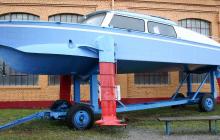
High-speed ship WSS-12
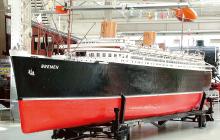
Bremen IV (Model)
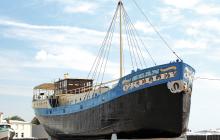
Houseboat Sean o'Kelley
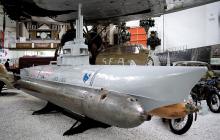
Mini-Submarine Beaver
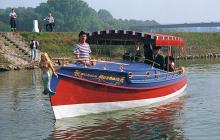
Maybach Boat
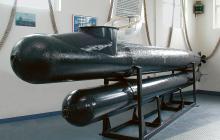
One-Man-Torpedo
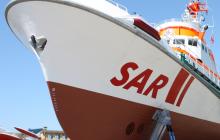
Rescueship JT Essberger
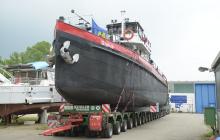
Towboat Glarus
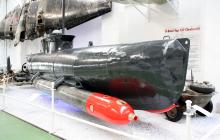
Mini-Submarine Seal
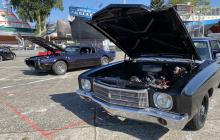
Get-together of Petrolheads

NASA-astronaut Susan Still-Kilrain
17.08.2024 Speech

Science Fiction Convention
28.09.2024 - 29.09.2024
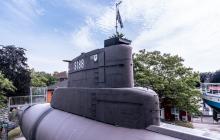
Submarine U9
12.10.2024 - 13.10.2024

Transall C 160

Gauge-1 Meeting
16.11.2024 - 17.11.2024

Winter Modeling Day

Retro Market
25.01.2025 - 26.01.2025

Hitler in Argentina

Hitler’s Spy Web in South America

When Eagles Soared Vol. 3

When Eagles Soared Vol.1

Hitler and the Secret Alliance

When Eagles Soared Vol.2

U-Boats War in Photos Vol. 1

U-Boat! Rare Types

U-Boat War in Photos Vol. 2

Rise and Fall of the U-Bootwaffe

U-Boat War in Photos Vol. 6

Lost WWII U-Boat Photos (Vol. I)

Lost WWII U-Boat Photos (Vol. II)

U-Boat War in Photos Vol. III

U-Boat War in Photos Vol. IX

U-Boat War in Photos Vol. V

U-Boat! Volume 1

U-Boat! Volume 2

U-Boat! Volume 3

U-Boat! Volume 4

U-Boat! Volume 5

U-Boat! Volume 6

U-Boats! Volume 7

U-Boats! Volume 8

U-Boats! Volume 9

U-Boats! Volume 10

U-Boat! Volume 11

U-Boat! Volume 12

U-Boat! Volume 13

U-Boat Vol.XIV

SHARKHUNTERS information is honest submarine history with major emphasis on German U-Boats and no propaganda. Our monthly KTB Magazine is named after the logbook carried by each U-Boat during WW II, the Kriegs Tage Buch, and is kept as a reference in many archives. The history of at least one U-Boat is in each issue of the KTB, with the date that the U-Boat was launched, what type she was, her Skipper’s patrol areas, victims – and final fate of each U-Boat with latitude and longitude position.
To view our Mission Statement
Who are Sharkhunter Members?
A multitude of U-Boat Skippers, officers, and crew were in the Membership of SHARKHUNTERS and contributed to the KTB with their personal memories of the Kriegsmarine and service in the U-Boats during WWII. First person accounts by the men who actually waged the U-Boat War from both sides of the periscope…men whose names are etched in submarine history. This history is available nowhere else.
Don’t wait! Join Sharkhunters today.
Join Here Membership
SHARKHUNTERS is the world’s only organization that:
- Publishes a historically accurate magazine on this history
- Is approved by the U-Boat Veterans
- Is supported by the U-Boat Veterans
- Is assisted in history by the U-Boat Veterans
- And the ONLY one!
As a result, SHARKHUNTERS is the most complete and comprehensive source for the history of the submarine in general and the German U-Boat in specific.
In addition to U-Boats, the KTB Magazine profiles submarines and WWII veterans of the US Navy, USSR, Royal Navy, IJN, and other military services of nations that used the submarine as a major part of their naval fleets.
Many thanks for my Membership. Be sure that my best wishes for your health and happiness are on their way across the Atlantic with the velocity of light.
Winner of the Knights Cross, Oak Leaf & Crossed Swords
Quality Content
Members receive numerous benefits, including invitations to our “Patrols in Germany” and other tours, notification of meetings and the most accurate information about U-Boats anywhere.
Delivered to you monthly, the KTB Magazine is also kept as a reference in many archives. Packed with interesting articles and the history of at least one U-Boat in each issue.
Exciting Tours
Find out about upcoming meetings and tours. Join us! Our patrols visit places like Germany, Austria, Poland and more! Our “Patrols” feature deluxe motor coaches and top of the line accommodations with amenities.
Latest News
Get the latest news on current submarine events and discoveries. The Sharkhunters newsletter will keep you up-to-date on what’s going on. We keep you informed of the submarine news that matters most.
Make friends with veterans and other members of Sharkhunters. Come to our meetings or join us on a tour and you’re sure to meet new friends with similar likes and interests. We’re all family!
Customer Care
Get your questions and concerns addressed in a prompt, friendly manner. I’ll do my very best to ensure your membership is both memorable and satisfying! Your friend, Harry Cooper
©1999-2020 Sharkhunters International. All Rights Reserved. Website design and administration by Take Notice Media, LLC .
Terms and Conditions - Privacy Policy
The U-boats
- Most successful
- U-boat Patrols
- U-boat Types
- Convoy battles
- Successful patrols
- Combat strength
- Losses by year
- Scuttled boats
- Discovered boats
- Revised fates
- U-boat bases
- Technologies
- U-boat Emblems
Events on this day
What happened on 29 June?
Commander file
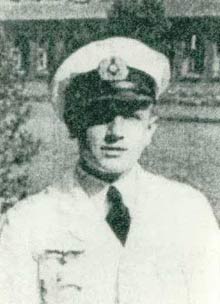
- More officers
U-boat of the day
U-boat finder, from the gallery.

Selected Book

$21.47 at amazon
Allied Warships
All u-boats of world war two.
Here we've created a compilation of all the 1154* U-boats that were commissioned into the Kriegsmarine before and during World War Two. Each boat has a complete history file, including construction facts, commanders, flotillas, successes and final fates.
1,168 U-boats have their own pages here
All U-boats
U-1 thru u-490, u-501 thru u-1407, the elektro boats, foreign u-boats.
14 submarines captured by the Germans.
U-boats never commissioned
135 U-boats laid down but not finished.
U-boats never laid-down
Almost 1,500 U-boats not yet laid down (many cancelled in 1943).
You can also try the U-boat Finder .
Please note: We use only the latest and, what we feel are, the most reliable sources of information for the site. Some of the information here was only first uncovered in 1994-1998 and thus does not always match older sources.
Griffin Museum of Science and Industry
What's here.
Providing unique experiences designed to spark scientific inquiry and creativity since 1933.
5700 S. DuSable Lake Shore Drive Chicago, IL 60637
Getting here
Inspire the next generation of scientific leaders and thinkers with a gift today.
Exhibit / U-505 Submarine
Elusive. deadly. captured., open today from 9:30 a.m. to 5:30 p.m. open tomorrow from 9:30 a.m. to 5:30 p.m..
A World War II terror of the Atlantic was about to meet its match.
On June 4, 1944, a German submarine was prowling the waters off the West African coast for American and Allied ships. Part of a U-boat fleet terrorizing the Atlantic, this submarine was known as U- 505 . But on this day, the U- 505 had just become the hunted.
- For all ages
- Included in Museum Entry
An Epic Underwater Story
For weeks, a U.S. Navy Task Group had tracked a shadowy U-boat. Despite a crack team and the latest technology, the Task Group was unable to pinpoint their elusive prey. Low on fuel, the frustrated captain had just called off the search when … there was something on the sonar.
Finding and destroying the sub would save Allied lives and supplies; capturing it could help win the war by cracking the U-boat mystery—but only if the Germans thought the sub had sunk. Securing the U- 505 and keeping the capture secret was the key.
Experience the only German sub in the U.S. in this dramatic exhibit and national war memorial to American sailors.
The U- 505 submarine has amazed Museum guests since 1954, and now has a captivating exhibit to match its scale and dramatic capture. How did U-boat technology work? What was life like on the sub? How was the capture kept secret? This riveting wartime story comes alive.
The exhibit is accessible to wheelchairs, Segways and strollers. Optional on-board tours have limited accessibility. See accessibility notes .
There wasn’t a wave in the ocean. It was calm, and the Chatelain came over the radio; it says we have a sub contact, and we’re getting ready to attack. Then all hell broke loose. Don Carter World War II veteran and radio communications signalman on the USS Guadalcanal
Kids will enjoy the dive trainer, periscope-navigation exercises... not to mention a re-created sub environment that shows just how hard it was to live in such a tiny space. Elizabeth Diffin Chicago Parent
Went to this museum just to see the submarine U-505. They didn't let me down. Fantastic exhibition, and what an amazing story! Book the onboard tour ahead of time. BigBirger Stockholm, Sweden
More to explore

U-505 In-depth Experience
A special extended behind-the-scenes tour of the U-505 submarine.
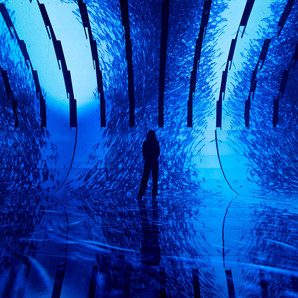
The Blue Paradox
A powerful, immersive look inside the ocean plastic crisis.

007 Science: Inventing the World of James Bond
Explore the iconic cars, gadgets and props of the James Bond film series.
How can we help you?
Loading more results ...
No more results to load
- Join + Give

COMMENTS
If you want to see the ship's bridge, then a guided tour is a must. Your tour guide will also ensure you get all the background information necessary to get as much out of your visit as possible. Address: U-Bootmuseum Hamburg GmbH St. Pauli Fischmarkt 10, 20359 Hamburg 0049 +40 3200 4934 [email protected]. Opening Hours:
Guided tour of the submarine 434. For our visitors who want to learn more about life on board a submarine and the technical details, our guided tours with our trained guides are recommended. Our guides will guide you - for an additional charge of €5.00 per person (duration of the tour approx. 45 minutes) - not only through the submarine with ...
Oct 2022. Once you purchase your entry token, you proceed through the turnstile and walk through the submarine at your own pace. Suggest edits to improve what we show. Improve this listing. All photos (847) The area. Strandstraße 92 Strandstrasse 92, 24235 Laboe, Schleswig-Holstein Germany. Reach out directly.
Those visiting Kiel, Germany can board and tour the U-995, a completely intact Type VIIC/41 U-boat. From September of 1943 to the end of the war, the 220-foot vessel conducted several patrols, sinking a total of nine enemy ships, including two warships. ... U-2540. One of Germany's last U-boats to be built, the U-2540 was scuttled before she ...
Welcome to the German U-boat-Museum, an institution highly regarded by visitors and international experts. It is composed mainly of the U-boat-Archive and a collection of U-boat exhibits. Started in 1947, the U-boat-Archive compiles all attainable information, photographs and personal notes by witnesses as well as historians of the history of ...
Today's admission times: from 9 a.m. to 8 p.m. This website and its offers are aimed exclusively at museum visitors in Germany, so that the texts, freely translated into English, serve as an aid. ★★★ U-Boat Museum Hamburg ★★★ Visit the legendary submarine 434 - one of the largest non-nuclear hunting and espionage submarines - at the ...
The submarine "Wilhelm Bauer" has never been in combat. It was scuttled by the own crew near the end of WW II. 1957 it was salvaged and after refit used as a training vessel in the Federal German Navy. Be astonished about the technology and experience the narrowness 58 men had to stand, surrounded by the pressure of the water….
Top ways to experience U-Bootmuseum and nearby attractions. Hamburg Dungeon Admission Ticket. 216. Historical Tours. from. $30.56. per adult. The Local Tour of Hamburg Historic Centre. 815.
Private tour; the U-Boat 434; Webcam an tide; Interesting. U-Boat; Contact; Legal Disclosure - Impressum ... This website and its offers are aimed exclusively at museum visitors in Germany, so that the texts, freely translated into English, serve as an aid. ... Further exciting information about U-434 can be found at the following link: U-Boat ...
7 Things to See at the U-Boot Museum Hamburg. 1. Visit The Torpedo Rooms. 2. Experience the Submarine Accommodation. 3. Check Out the U-434 Command Centre. 4. Inspect the Crew Accommodation.
Across the street, on the banks of the firth, is the U-boat. The U-995 was used by Marines in the Second World War. It started operating in 1943 and was used in multiple battle actions and combat patrols. After the war, the Norwegian Navy used it as a training ship and for different tests. It was returned to Germany in 1965 and became a museum ...
German Submarine U-995: Tour a German U-boat and get a sense of what life in a submarine must have been like - See 656 traveler reviews, 800 candid photos, and great deals for Laboe, Germany, at Tripadvisor.
In early 2007 the Archiv changed its name from "U-Boot Archiv" to Deutsches U-Boot Museum.This is still the same people, same mission. On the following pages we would like to introduce the Deutsches U-Boot Museum in Cuxhaven-Altenbruch, Germany (see their site).We believe this is the most comprehensive and also most competent source for the German U-boat history anywhere in the world.
Umer Sohail November 16, 2016 1. Ahh, the dreaded German submarine U-995. The boat that was the star of both of the World Wars, and was the factor is the making and breaking of so many battles. This particular U-boat was a German Type VIIC/41. It was manufactured on 25th of November 1942 and was commissioned on 16th of September 1943.
Am Technik Museum 1. 67346 Speyer. Telefon: 06232-6708-66 (werktags) [email protected]. Contacting us. The submarine U9 was built by the Kieler Howaldtswerke and put into service on 11 April 1967. The boat belongs to the submarine classification 205 and thus to the third generation of German U-boats. It weights 466 tons, is 46 m long, 5 m ...
2) Laboe Naval Museum, near Kiel, Schlweswig-Holstein, Germany. U-995, type VII-C/41 surrendered 1945 to British at Trondheim, Norway, 1952-1965 became Norwegian submarine Kaura, became museum ship at Laboe 1971. Laboe Naval Memorial (Marine-Ehrenmal) - Tripadvisor. thanks to @CarlChristian for posting it in this question about Kiel.
The cost of war for both crews and boats was high, with more than 28,000 German submariners being killed. Visiting Wilhelmshaven, Cuxhaven, Kiel and Bremerhaven, this tour looks at the original U-Boat bases around Bremen, giving you the opportunity you to go inside two U-Boats.
Today we go for a tour on a real World War 2 era German submarine. This was filmed at the Museum of Science and Industry in Chicago, Illinois in April, 2016....
Call 01709 787 463. Secure your holiday from as little as £50pp deposit. Delve into the gripping history of the U-boat war, inspired by the real-life events portrayed in 'Das Boot,' on a captivating tour with Leger Holidays.
U-Boat! Volume 13. The Official Publication of the History of the U-Bootwaffe! SHARKHUNTERS information is honest submarine history with major emphasis on German U-Boats and no propaganda. Our monthly KTB Magazine is named after the logbook carried by each U-Boat during WW II, the Kriegs Tage Buch, and is kept as a reference in many archives.
This is a list of submarines on display around the world separated by country. This list contains all preserved submarines and submersibles on display, including submarine museum boats, that currently exist as complete boats or as significant structural sections.. This list does not contain replicas or wrecks.See List of ship replicas, List of shipwrecks and List of sunken nuclear submarines ...
The U-boat War in World War Two (Kriegsmarine, 1939-1945) and World War One (Kaiserliche Marine, 1914-1918) and the Allied efforts to counter the threat. Over 40.000 pages on the officers, the boats, technology and the Allied efforts to counter the U-boat threat.
On June 4, 1944, a German submarine was prowling the waters off the West African coast for American and Allied ships. Part of a U-boat fleet terrorizing the Atlantic, this submarine was known as U- 505. But on this day, the U- 505 had just become the hunted. For all ages.